Arkansas, a state steeped in history and natural beauty, is home to several historic forts that once played pivotal roles in shaping American history.
These impressive structures provide a glimpse into the past and allow visitors to explore a bygone era’s strategic, military, and cultural facets.
From the early 19th century to the Civil War, these forts witnessed conflicts, treaties, and the constant ebb and flow of power between nations and peoples.
In this article, ” Historic Forts in Arkansas, ” we will explore the strategic forts that shaped the “Land of Opportunity.”
Historic Forts in Arkansas
| 1. Fort Smith | 6. Fort Logan H. Roots |
| 2. Fort Hindman | 7. Fort Chaffee |
| 3. Fort Carlos III | 8. Fort Lookout (Redoubt A) |
| 4. Arkansas Post | 9. Fort Southerland |
| 5. Fort Curtis |
1. Fort Smith
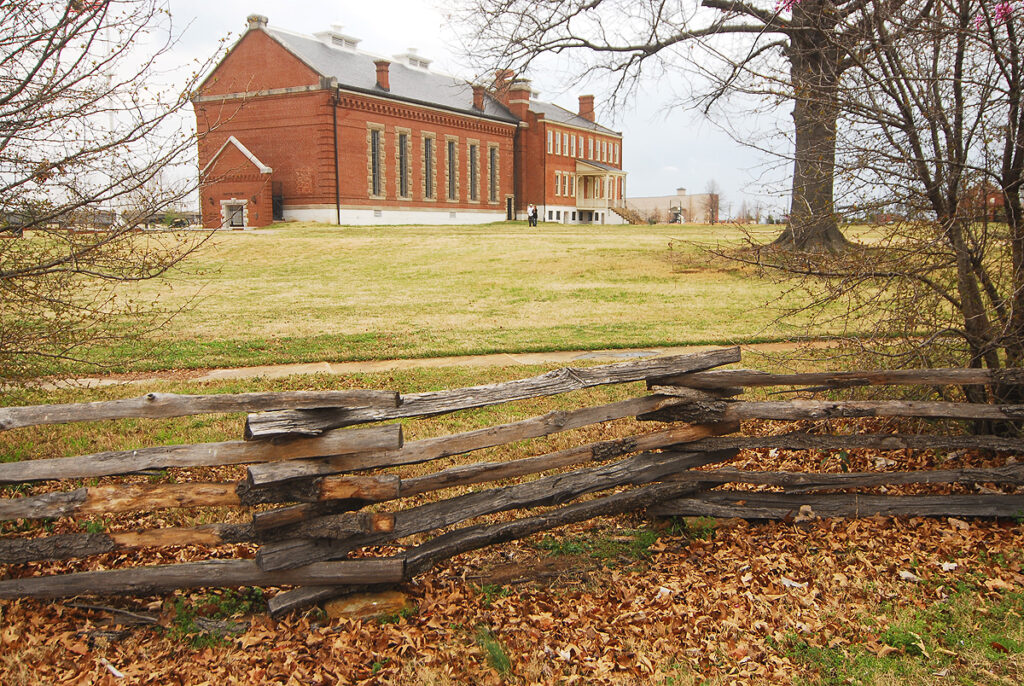
In 1803, the United States acquired a vast territory known as the Louisiana Purchase from France.
This major land acquisition doubled the size of the country, provided valuable resources, and signaled the start of American westward expansion.
The Louisiana Purchase included present-day Arkansas, where the first Fort Smith would later be established.
Belle Point
In 1817, the United States Army chose a strategic location at Belle Point, the confluence of the Arkansas and Poteau rivers, to build the first Fort Smith.
This site offered both natural protection and an advantageous position for monitoring trade and relations with native tribes.
Under the command of Major William Bradford, soldiers from the 1st U.S. Infantry Regiment constructed the fort from wood, which was completed by the end of that year.
The primary purpose of Fort Smith was to maintain peace between the Osage and Cherokee tribes in the region. Its role as a mediator and peacekeeper garnered it the nickname “Fort of the Peaceful Valley.”
Indian Territory
The Indian Territory, presently known as Oklahoma, was a significant region bordering Arkansas.
Following the Indian Removal Act in 1830, the United States government forced various native tribes, including the Cherokee, Muskogee (Creek), and Choctaw, to resettle in the Indian Territory.
Fort Smith played a vital role in this process as a waypoint and temporary settlement for native populations during their forced migration.
Notable events involving Fort Smith during this period include:
- The Treaty of Fort Smith negotiation in 1820 secured Cherokee land in exchange for land in Indian Territory.
- The Five Civilized Tribes arrived in the 1830s during the Trail of Tears, which passed through Fort Smith en route to Indian Territory.
2. Fort Hindman
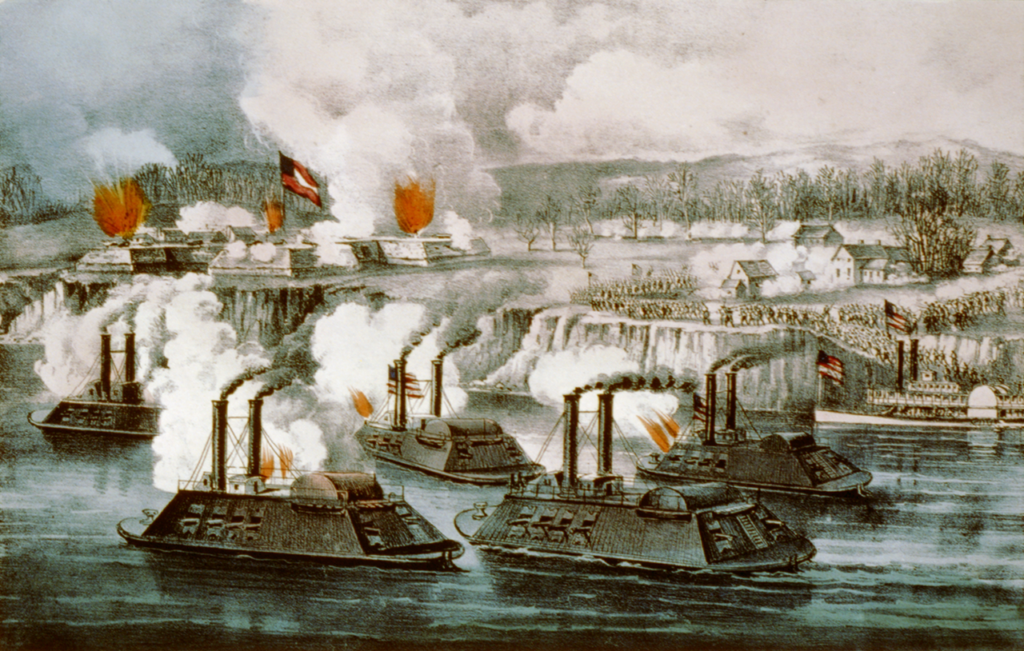
Fort Hindman was a Confederate earthwork fortification situated along the Arkansas River.
It played a critical role as a Confederate stronghold during the Civil War, significantly impacting Union operations along the Mississippi River.
Construction of the fort commenced on September 28, 1862, under Major General Theophilus Holmes’s directive, in response to Union activities on the Mississippi River.
Lieutenant John Dunnington of the Confederate Navy oversaw the construction, assisted by civilian engineers, a company of combat engineers, impressed slaves, and Confederate troops.
The fort’s design was a square with long exterior parapets, surrounded by a broad and deep ditch, featuring firing steps, casemates, and armed with heavy guns and rifles.
By December, the fort’s garrison had expanded to about 5,000 men, comprising Arkansas, Texas, and Louisiana brigades.
Brigadier General Thomas James Churchill later took command. The fort successfully repelled a Union attempt to capture it in late November and early December, later capturing the Federal transport Blue Wing.
The Battle and Downfall
In January 1863, Major General John McClernand led a combined Federal force against the fort, bombarding it on January 10 and successfully overcoming its defenses by January 11.
The fort’s surrender led to the capture and imprisonment of nearly 5,000 Confederate soldiers, followed by the destruction of the fort by Federal forces.
Post-War and Current Status
Despite standing for several years after the war, Fort Hindman was eventually claimed by the Arkansas River, with its entire structure succumbing to changes in the river’s course by 1880.
Today, some trenches remain, but little else survives. The site, managed by the Arkansas Post National Memorial, allows visitors to explore the remnants and learn about the fort’s historical importance.
3. Fort Carlos III
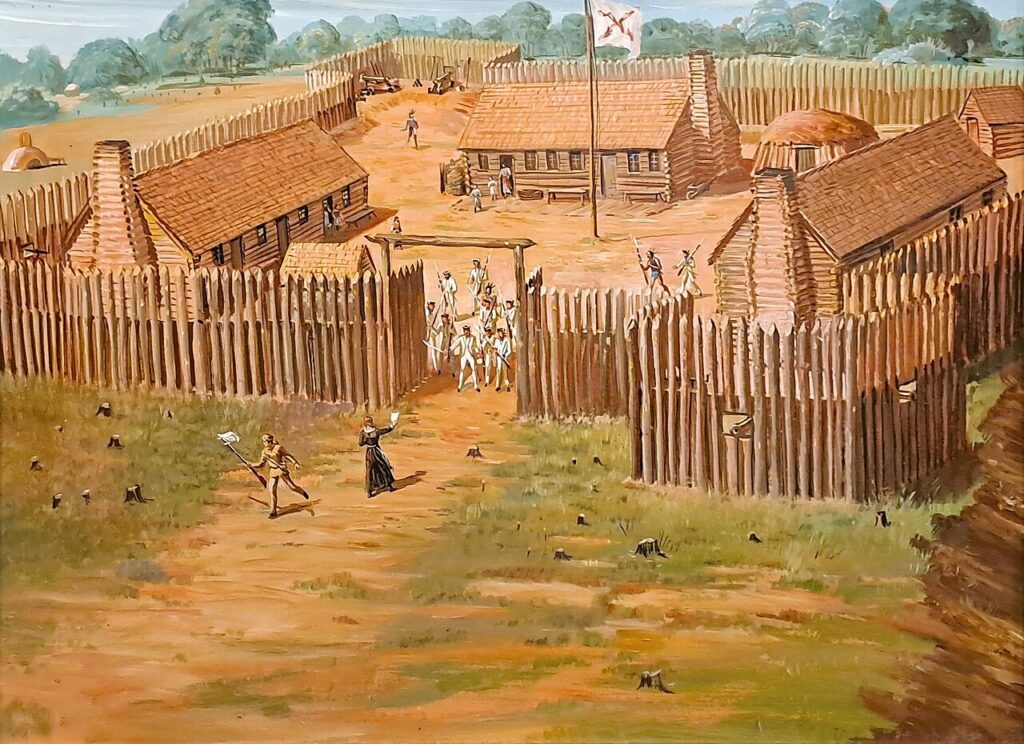
Fort Carlos III was a significant Spanish fortification located at the Écores Rouges, which is now the Arkansas Post National Memorial.
The fort was named after King Carlos III and was strategically positioned on the left bank of the Arkansas River, about 29 miles from its mouth.
Its construction was initiated on July 11, 1781, as a direct response to the threat posed by British partisans planning to capture the Arkansas Post.
The fort’s establishment marked a critical phase in the Spanish military presence in the region.
The design of Fort Carlos III featured a wooden palisade, stockade, bastions, embrasures, storehouses, barracks, officers’ quarters, a powder magazine, cannons, swivel guns, and ordnance stores.
Captain Balthazar de Villiers, the initial commandant of the post, described the fence as made of red oak stakes thirteen feet high, with a banquette for the troops.
The fort also included essential buildings like a large house and a storehouse, as well as two gates and bastions equipped with brass cannons and swivel guns.
Command and Military Action
After Captain de Villiers fell ill, Lieutenant Don Luis de Villars took over as acting commander in April 1782.
Captain Jacobo du Breuil then succeeded as the commander on January 5, 1783, and added another bastion to the fort.
Fort Carlos III became a refuge for local women and children during James Colbert’s 1783 raid in the American Revolutionary War.
Erosion and Replacement
Towards the late 1780s and early 1790s, the fort began to suffer from erosion and flooding, particularly on the side closest to the river.
Captain Ignacio Delinó, who assumed control in 1790, initiated the construction of Fort San Estevan, about half a mile from the river, to replace the deteriorating Fort Carlos III.
By February 1793, the entire structure of Fort Carlos III was lost to river erosion.
Today, the remains of Fort Carlos III are submerged beneath Horseshoe Lake (Post Bend), a former channel of the Arkansas River, now utilized as a navigation lake.
Visitors to the Arkansas Post National Memorial can learn about the historical significance of this Spanish fort.
It served as the headquarters of Spain’s district of Arkansas from 1781 to 1791 and played a crucial role in the early history of the United States.
4. Arkansas Post

Arkansas Post was the first European settlement in the territory that would become the state of Arkansas. It was established as a trading post by Henri de Tonti, a French explorer, in 1686.
Tonti was a lieutenant under Robert de La Salle, and the establishment of Arkansas Post was a part of their larger mission to colonize the Mississippi Valley for France.
The post’s location, at the confluence of the Arkansas and Mississippi Rivers, made it an important strategic and commercial site.
Colonial Era and Changes in Control
During its early years, Arkansas Post was a small, remote settlement primarily involved in the fur trade.
It changed hands among colonial powers, passing from French to Spanish control in 1763 following the Treaty of Paris and then briefly back to France in 1800 before being acquired by the United States as part of the Louisiana Purchase in 1803.
Civil War and the Battle of Arkansas Post
Arkansas Post played a significant role in the American Civil War. In 1862, Confederate forces constructed Fort Hindman there to defend the Arkansas River and the interior of the Confederacy.
However, in January 1863, Union forces attacked and captured the fort in the Battle of Arkansas Post, dealing a significant blow to the Confederate control of the region.
Post-Civil War Developments
After the Civil War, the significance of the Arkansas Post declined.
The construction of railroads led to the development of other trade centers in Arkansas, and Arkansas Post gradually transitioned into a quiet, rural community.
Preservation and Legacy
Today, the Arkansas Post is remembered and preserved as a significant historical site.
The Arkansas Post National Memorial, established in 1960, commemorates the post’s diverse history, from its colonial roots to its Civil War significance.
Visitors to the memorial can explore the remains of the fortifications view exhibits, and walk trails that provide insights into the area’s rich history.
Arkansas Post’s history reflects the broader narrative of American development, from colonial expansion and trade to the conflict and transformation of the Civil War.
Its enduring legacy as a site of cultural and historical significance continues to attract visitors and historians alike.
5. Fort Curtis
Fort Curtis, constructed in 1862 in Helena, Arkansas, was a critical defensive position for the Union Army during the American Civil War.
Its strategic location along the Mississippi River allowed the Union to control vital river traffic and establish a regional operations base.
Key figures in Fort Curtis’s history include Union commanders like Major General Benjamin M. Prentiss, who played significant roles in its construction and defense.
On the opposing side, Confederate forces targeted the fort, recognizing its importance in the Union’s control of the Mississippi River and surrounding areas.
Battle of Helena
The Battle of Helena on July 4, 1863, was the most significant event involving Fort Curtis. This battle was pivotal, as Confederate forces attempted to attack Helena to relieve pressure on Vicksburg, Mississippi.
The Union’s defense of Fort Curtis and other fortifications in Helena was crucial in repulsing the Confederate attack.
The Union’s success at Helena, coinciding with their victory at Vicksburg, dealt a significant blow to Confederate efforts in the region.
After the war, the fort’s military importance waned, leading to its eventual demolition in 1874.
The reasons for the demolition are not entirely clear but were likely influenced by the diminished strategic value of the fort and the evolving needs of the post-war community in Helena.
Fort Curtis Today
Today, the site of Fort Curtis is commemorated as a historical landmark, a testament to its role during the Civil War.
Its history is integral to Helena’s and Arkansas’s Civil War heritage, underlining the region’s strategic importance during the conflict.
6. Fort Logan H. Roots
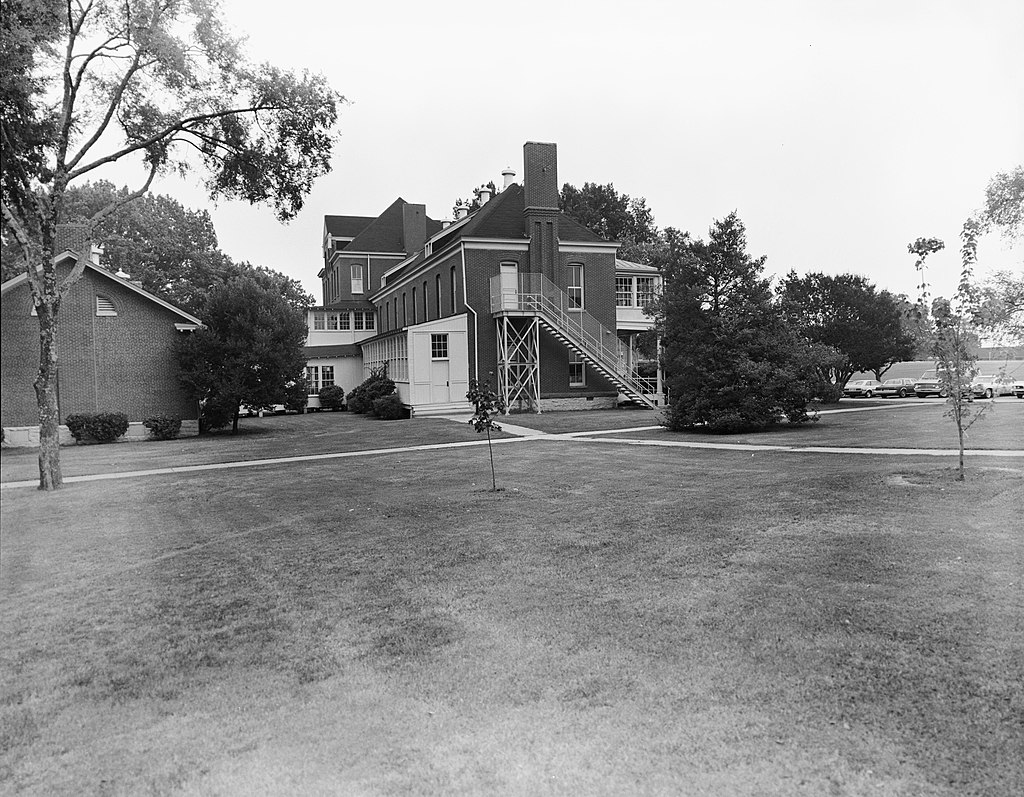
Fort Logan H. Roots was established in 1892 in North Little Rock, Arkansas. It was named in honor of Brevet Lieutenant Colonel Logan Holt Roots, a significant figure in Arkansas’s post-Civil War history.
The naming of the fort paid tribute to his impactful service and legacy.
From 1896 to 1913, the fort was actively garrisoned, serving as a necessary U.S. Army installation. During this period, it played a crucial role in regional military operations, acting as a strategic base for the army.
This era marked the fort’s primary phase of military activity.
Transformation into a Veterans’ Hospital
Following its active military use, Fort Logan H. Roots experienced a significant shift in purpose.
It was converted into a veterans hospital, transitioning from focusing on military operations to providing medical care and support for former service members.
This repurposing marked a new chapter in the fort’s history, emphasizing its role in healthcare and rehabilitation.
Legacy and Impact
The legacy of Fort Logan H. Roots extends beyond its military contributions. As a veterans’ hospital, it has played a pivotal role in the treatment and care of veterans.
This enduring legacy underscores the fort’s importance in military and medical spheres, making it a notable historical landmark in North Little Rock, Arkansas.
7. Fort Chaffee

Fort Chaffee, located in Arkansas, was initially established as a training facility for soldiers during World War II.
It played a crucial role in preparing troops for combat, reflecting the military needs and strategies of the era. The fort’s establishment was part of a broader effort to bolster the United States’ military capabilities during the war.
In the post-World War II era, particularly during the Cold War, Fort Chaffee continued to serve critical military functions.
It was used for various training exercises and operations, adapting to the changing requirements of the U.S. military. This period underscored the fort’s ongoing relevance in national defense.
Role in Humanitarian Efforts
Fort Chaffee also played a significant part in humanitarian efforts. It was used as a refugee resettlement location, most notably for Vietnamese refugees during the Vietnam War and Cuban refugees during the Mariel boatlift.
These operations highlighted a different aspect of the fort’s utility, emphasizing its capacity to aid in humanitarian crises.
Preservation and Historical Significance
Efforts have been made to preserve the historical aspects of Fort Chaffee, recognizing its importance in U.S. military history.
The site serves as a reminder of its various roles, from training soldiers for war to providing refuge for those fleeing conflict.
Fort Chaffee remains integral to Arkansas’s military history and is a point of interest for its historical and cultural significance.
8. Fort Lookout (Redoubt A)

Fort Lookout, also known as Redoubt A, is a testament to the strategic military efforts during the American Civil War.
Situated on the outskirts of Camden, Arkansas, it was part of a series of defensive structures built by Confederate forces in early 1864, anticipating the Union Army’s Camden Expedition.
Today, it is recognized as a National Historic Landmark, forming a crucial part of the Camden Expedition Sites.
Fort Lookout is characterized by its rectangular earthwork structure strategically positioned on a 50-foot-high bluff overlooking a bend in the Ouachita River.
To its west lies an L-shaped redoubt designed to control the fording sites at the bluff’s base. Capable of mounting at least six-period guns, the fortification’s location and design were integral to the defense of Camden.
Although modern developments have partially altered the site, much remains well-preserved, enveloped by forest, and marked by remnants of trenches extending from the main structure.
The Crucial Role in the Camden Expedition
The construction and utilization of Fort Lookout were directly linked to the military maneuvers of the Civil War, specifically the Camden Expedition of March to May 1864.
Brigadier General Alexander T. Hawthorn, a Camden native, led Confederate forces in erecting a series of redoubts from January to March 1864.
These fortifications were designed to protect Camden’s southern and western land approaches, preparing for the impending Union advance.
Union Occupation and Confederate Fortification Efforts
Union Major General Frederick Steele, commanding the forces in Little Rock, was ordered to advance southwestward as part of the broader Red River Campaign.
After a halt at the Battle of Prairie D’Ane, Steele’s troops occupied Camden on April 15, 1864, following its abandonment by Confederate defenders.
During this brief ten-day occupation, Union forces expanded Camden’s defenses, adding trenches and earthworks. However, the setbacks of Poison Spring and Marks’ Mills led to a strategic retreat from Camden on April 26.
Post-Occupation Enhancements and Legacy
After the Union withdrawal, Confederate forces reoccupied Camden and fortified the city. They gave special attention to strengthening the waterfront area, which was known to be vulnerable.
By the end of 1864, a complete trench line encircled Camden, marking the culmination of defensive efforts in which Fort Lookout played a key role.
This network of fortifications reflects the adaptive military strategies employed by both Confederate and Union forces during a pivotal period of the Civil War.
Fort Lookout remains a significant historical site within this network, offering insight into the tactical challenges and shifts that characterized the era.
9. Fort Southerland

Fort Southerland, also known as Redoubt E, is a historic military site in Camden, Arkansas.
It is one of the five redoubts built by Confederate forces during the American Civil War, specifically for the defense of Camden in the face of the Union Army’s Camden Expedition.
Today, Fort Southerland is part of the Camden Expedition Sites, a collection of military locations designated as National Historic Landmarks.
Fort Southerland was strategically designed to be an integral part of Camden’s defensive network. As Redoubt E, it was positioned to bolster the city’s defenses against potential Union attacks.
The fortification’s architecture and layout were tailored to the military needs of the time, reflecting the strategic thinking and engineering capabilities of the Confederate forces.
Role in the Camden Expedition of 1864
The construction of Fort Southerland was directly linked to the military operations of the Civil War, particularly the Camden Expedition from March to May 1864.
This expedition was a significant campaign where the Union Army sought to penetrate Confederate territory.
The establishment of redoubts like Fort Southerland was a Confederate response to fortify Camden and protect it from Union advances.
Confederate and Union Military Engagements
Fort Southerland and the other redoubts played a crucial role in the city’s defense during the Camden Expedition.
The Confederate forces utilized these fortifications to mount a resistance against the Union Army, showcasing the tactical military maneuvers prevalent during the Civil War.
The interactions between the Confederate and Union forces around these redoubts symbolized the larger military strategies during this period.
Historical Significance and Preservation
Fort Southerland’s significance extends beyond its military role. As a part of the Camden Expedition Sites, it is a historical landmark that encapsulates a crucial phase of the Civil War.
Efforts to preserve these sites underscore their importance in understanding the broader context of military strategies and engagements during the Civil War.
Today, Fort Southerland is not just a symbol of past military conflicts but also a site of historical education and remembrance, highlighting the complex and tumultuous period of American history.
Related: Exploring The Historic Forts of Hawaii
Role in Civil War
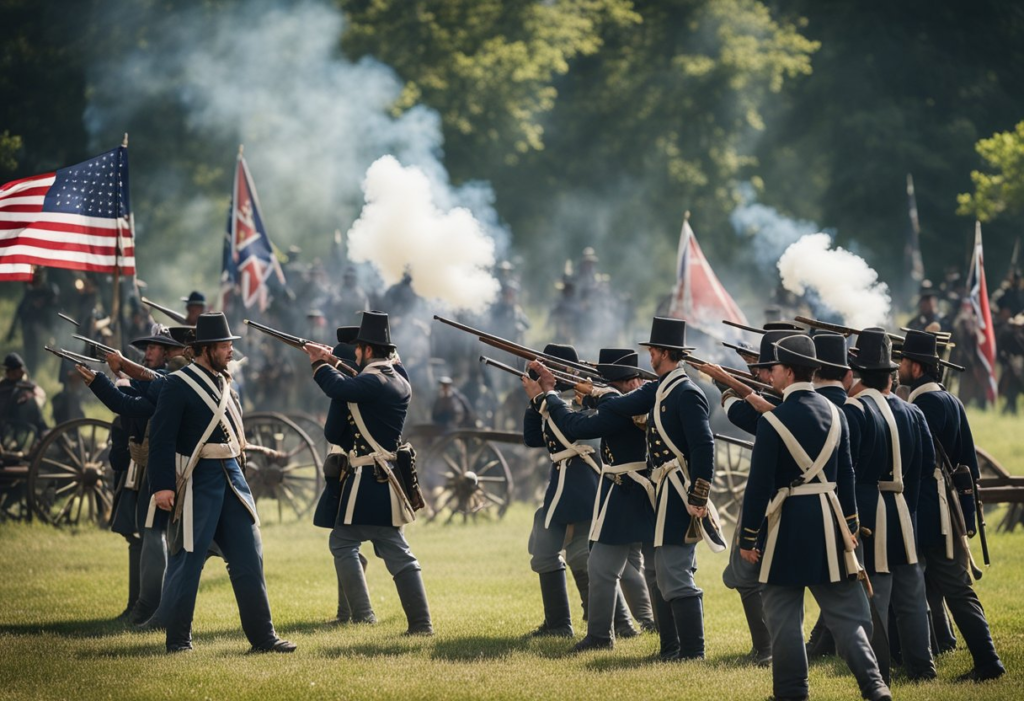
Supply Depot
Arkansas was crucial during the Civil War, primarily as a supply depot for the Union and Confederate forces. Due to its strategic location, the state was a significant source of food, weapons, and ammunition.
Its rivers and railroads also allowed for easy transport of these supplies across the country.
Several historic forts in Arkansas, such as Fort Smith and Fort Hindman, were utilized as supply depots. These forts were equipped with warehouses and storehouses to accommodate the necessary provisions for the troops.
Union and Confederate Forces
Arkansas witnessed competitive activity between the Union and Confederate forces during the Civil War. While Confederate troops initially occupied the state, Union forces made significant efforts to capture the vital forts and territory.
The Confederate forces utilized forts like Fort Smith and Fort Hindman as defensive positions and bases from which to launch offensives.
These forts were strategically situated near the Arkansas River, granting control over crucial transportation and supply lines.
Conversely, the Union forces recognized the importance of these forts and launched several military campaigns to take control of them.
For example, in December 1862, Union General William T. Sherman led an offensive against Fort Hindman and successfully captured the fort after overcoming its well-fortified defenses.
Related: 7 Historic Forts in Idaho
Local and National Administration
Federal Court for Western District of Arkansas
The Federal Court for the Western District of Arkansas played a significant part in the history of Arkansas. Established in 1851, the court had jurisdiction over civil and criminal cases in the western part of the state.
One of the most well-known judges who played an important role in serving in this court was Judge Isaac C. Parker. He presided from 1875 to 1896.
During his tenure, Judge Parker earned a reputation as the “Hanging Judge” due to his strict enforcement of the law and his penchant for ordering death sentences.
He presided over a quickly expanding region with an increase in lawlessness.
As a result, his courtroom saw several high-profile cases involving outlaws, disputes over land and property rights, and conflicts between settlers and Native Americans.
The court convened in various locations, including Fort Smith and Van Buren, before moving to a permanent courthouse in the city of Fort Smith in 1891.
The building, now known as the Fort Smith National Historic Site, remains an important landmark, preserving the court’s history and its notable judges.
United States District Court
The United States District Court is vital to the nation’s judicial system. Established by the Judiciary Act of 1789, there are currently 94 district courts across the United States, including one in the Western District of Arkansas.
The court handles various cases, such as those related to civil rights, antitrust, and intellectual property.
The Western District of Arkansas has experienced significant changes since the days of Judge Isaac C. Parker.
Modern practices and technological advancements have allowed the court to keep pace with an ever-evolving legal landscape. This has led to a more efficient administration with greater accessibility to the public.
In the present day, the United States District Court for the Western District of Arkansas has six divisions, each located in a different city within the Western District.
These divisions are Fayetteville, Fort Smith, Hot Springs, El Dorado, Texarkana, and Harrison. The many divisions help disburse the caseload and make the judicial system more accessible for the population within their respective areas.
Native American History
Before Arkansas became home to various historic forts, Native Americans had rich and diverse histories in the area.
Many tribes, including the Caddo, Osage, Cherokee, and Quapaw, thrived in the region due to its fertile lands and abundant resources.
Among the notable locations illustrating the Native American history in Arkansas is the Trail of Tears Overlook. This site commemorates the forced removal of the Cherokee people from their homelands to present-day Oklahoma.
The tragic event known as the Trail of Tears led to the death of thousands of Cherokee and other Native Americans due to harsh weather, scarcity of supplies, and illness.
Arkansas also witnessed significant conflicts between Native Americans and Europeans during the Indian Wars. Territorial disputes between settlers and tribal communities played a significant role in shaping the development of historic forts in the region.
One of the most notable conflicts in Arkansas history was the 1739 Battle of Cale, which was fought between the Quapaw tribe and Spanish forces.
Remnants of ancient Indian villages provide valuable insights into the day-to-day life of Native Americans in Arkansas.
These villages, often located along riverbanks, contributed to establishing trade routes and exchanging goods between neighboring tribes.
Archaeological findings from these sites reveal fascinating aspects of the Native American cultures in the area, such as their agricultural practices, pottery designs, and religious beliefs.
Related: Historic Forts in North Carolina
Local Sightseeing and Tourist Attractions
Arkansas has a rich history that can be explored through its various historic forts and sites. Among these attractions are a variety of walking trails, parks, and museums that cater to travelers and history enthusiasts alike.
Walking Trails and Parks
Fort Smith National Historic Site offers a well-maintained walking trail along the Arkansas River.
This accessible and picturesque trail allows visitors to explore the scenic beauty while learning about the fort’s historical significance. Numerous informational placards along the path offer insights into the area’s past.
National Parks near the historic forts provide additional opportunities for hiking and exploration.
For instance, the Ozark National Forest and the Buffalo National River are a short drive away and offer miles of scenic trails for visitors to hike and experience Arkansas’s natural beauty.
Fort Smith Museum of History is another popular tourist attraction in the area.
The museum is a treasure trove of information about the region’s past, featuring exhibits showcasing local history, including the military fort initially known as Belle Point.
Visitors should not miss the opportunity to explore the museum and learn more about Fort Smith’s role in developing the American frontier.
The National Historic Site Visitor Center is a must-see for those interested in the forts of Arkansas. Here, visitors can pick up maps, brochures, and other informational materials about the historic sites in the area.
Knowledgeable park rangers can answer questions and provide insights about what to see and do during your visit.
Conclusion – Historic Forts in Arkansas
Joint efforts by federal agencies and local organizations have been instrumental in preserving and developing Arkansas’ historic forts, where Union troops once marched and early settlers sought refuge.
These collaborative projects have been crucial in maintaining the integrity of historic buildings within these forts, ensuring that they honor their historic significance and adapt for contemporary use.
Through such endeavors, Arkansas’ historic forts, steeped in the history of early American expansion and military conflicts, continue to serve as valuable sites for public enjoyment and cultural education.
Echoing Union troops’ footsteps and early settlers’ voices, these sites now stand as testaments to a rich and complex past, offering a unique blend of historical insight and modern relevance.

Cory is a website owner and content creator who enjoys fishing, history, coin collecting, and sports, among other hobbies. He is a husband and father of four.
Romans 15:4 For whatever was written in former days was written for our instruction, that through endurance and through the encouragement of the Scriptures we might have hope.

